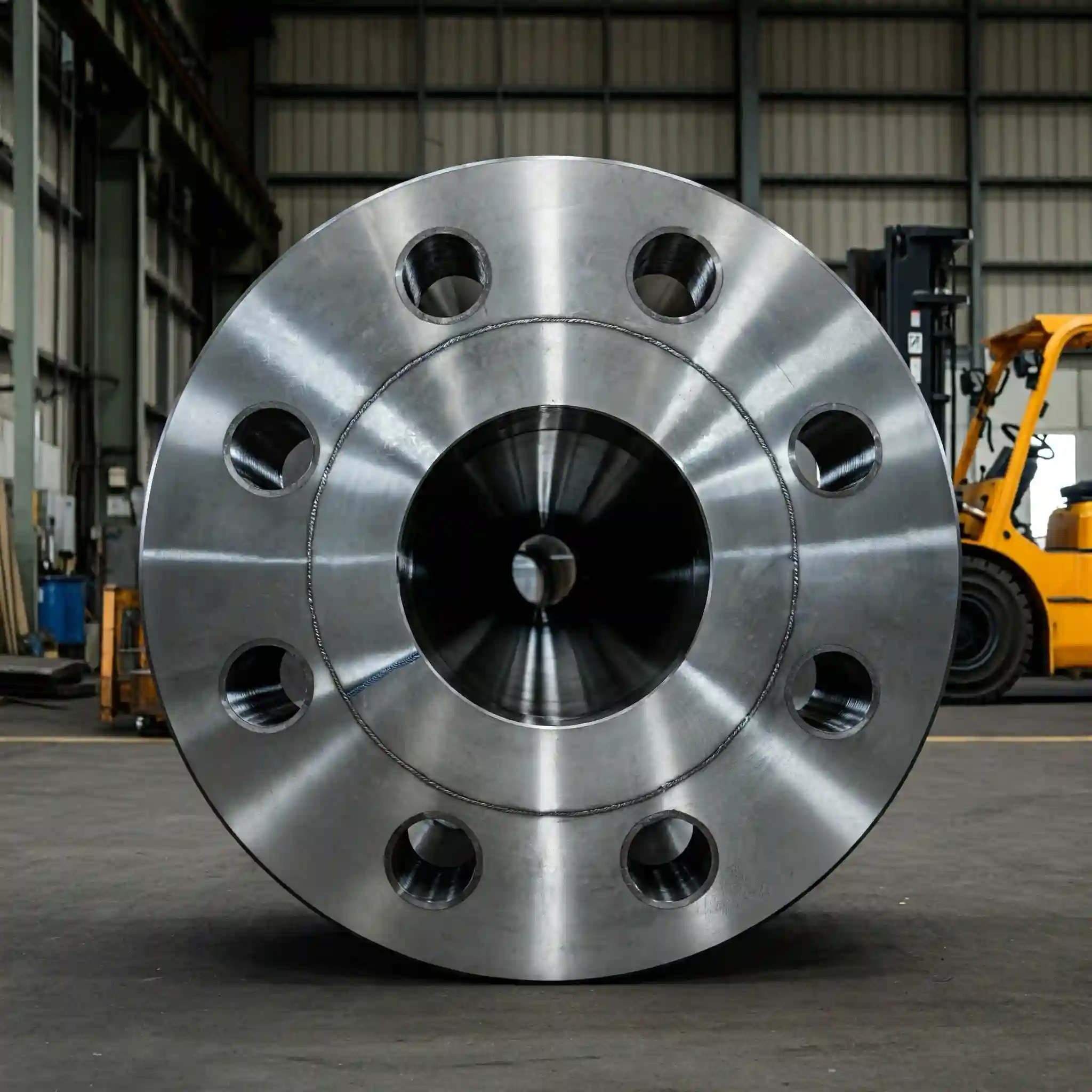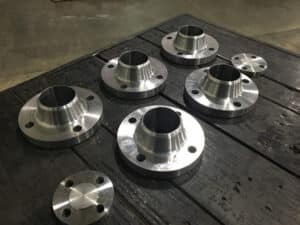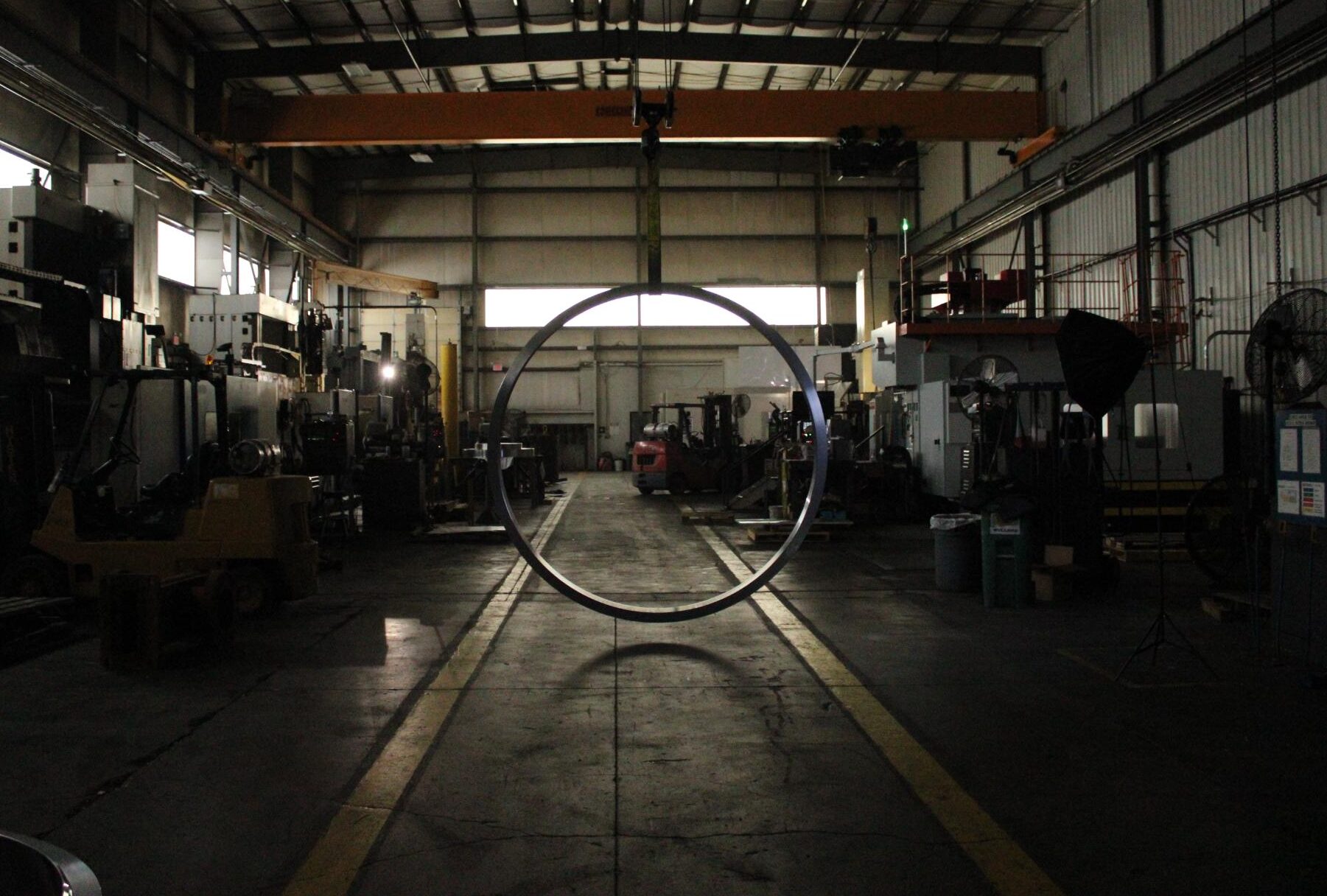
Weld Neck Flanges are pipe fitting commonly used in piping systems to connect pipes or valves. They are designed with a neck extending from the flange face, allowing a smooth transition between the flange and the pipe. This design also allows for easy welding, which is why they are called Weld Neck Flanges.
Materials used in Weld Neck Flanges
Weld Neck Flanges are usually made from carbon steel, stainless steel, alloy steel, or aluminum. The material used will depend on the application and the required pressure rating. For high-pressure applications, alloy steel or stainless steel are commonly used.
Read: Stainless Steel Flange vs Carbon Steel Flange
Types of Weld Neck Flanges
There are several different types of Weld Neck Flanges, including:
Standard Weld Neck Flanges
Reduced Weld Neck Flanges
Long Weld Neck Flanges
Slip-on Weld Neck Flanges
Lap Joint Weld Neck Flanges
Each type of flange has unique characteristics and is used for specific applications.
Pressure Rating of Weld Neck Flanges
The pressure rating of a Weld Neck Flange is determined by the ASME B16.5 standard. This standard assigns a pressure rating to each size and class of flange, which indicates the maximum pressure that the flange can safely handle. It is important to select the correct pressure rating for your application to ensure the safety and reliability of your piping system.
That’s why our sales team is ready to support.
Applications of Weld Neck Flanges
Weld Neck Flanges are used in a wide range of industries and applications, including:
Oil and gas
Chemical processing
Power generation
Water treatment
Food Processing
These flanges are commonly used in high-pressure applications due to their ability to handle high-pressure ratings and the smooth transition between the flange and pipe.
Frequently Asked Questions: Weld Neck Flanges
What is a Weld Neck flange used for?
A weld neck flange is used for connecting pipes, valves, pumps, and other equipment to form a piping system. It has a long tapered hub and is butt-welded to the pipe, providing high strength and making it suitable for high-pressure and high-temperature applications.
What is the strongest type of piping flange?
The strongest type of piping flange is usually considered to be the welding neck flange. It is strong because of its long tapered hub, which can provide high resistance to stress and enables the flange to handle high-pressure and high-temperature applications.
What are the two main types of flanges?
The two main types of flanges are:
Slip-On Flanges – which slip over the end of a pipe and are fillet welded to it.
Welding Neck Flanges – which have a neck that is welded to the pipe, providing a more secure connection and making it suitable for high-pressure and high-temperature applications.
What fitting can handle the highest pressure?
For high-pressure applications, a forged steel fitting such as a socket weld or threaded pipe fitting is typically used. These fittings have thicker walls and are stronger than cast iron or malleable iron fittings, making them better suited to handle high pressures. Additionally, high-pressure piping systems often use flanges with a welding neck design, which provide added strength and stability for high-pressure applications.
What is the difference between slip-on and weld neck flange?
The difference between a Slip-On flange and a Weld Neck flange lies in their design and intended application:
Slip-On Flange: It is designed for easy and quick installation and has a circular disk with a bore that allows it to be slipped over the end of a pipe. It is secured in place with fillet welding and is ideal for low-pressure applications.
Weld Neck Flange: It has a neck that is welded to the pipe, providing a more secure connection. It is suitable for high-pressure and high-temperature applications and is often used in the petrochemical, chemical, and oil and gas industries. The long tapered hub of the Weld Neck Flange provides high resistance to stress, making it the strongest type of flange available.
In summary, the Slip-On Flange is a convenient and cost-effective option for low-pressure piping systems, while the Weld Neck Flange is stronger and better suited for high-pressure applications.


